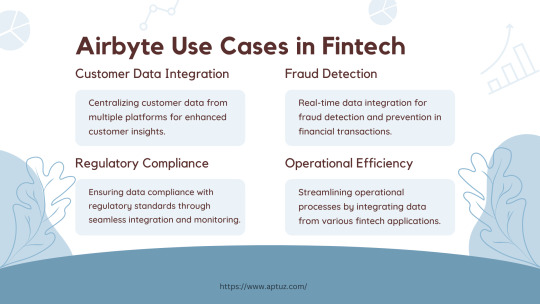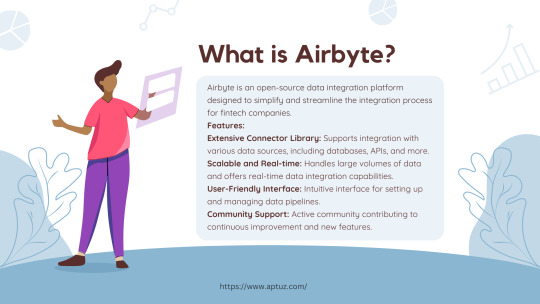#etl (extract
Explore tagged Tumblr posts
Text
What sets Konnect Insights apart from other data orchestration and analysis tools available in the market for improving customer experiences in the aviation industry?
I can highlight some general factors that may set Konnect Insights apart from other data orchestration and analysis tools available in the market for improving customer experiences in the aviation industry. Keep in mind that the competitive landscape and product offerings may have evolved since my last knowledge update. Here are some potential differentiators:

Aviation Industry Expertise: Konnect Insights may offer specialized features and expertise tailored to the unique needs and challenges of the aviation industry, including airports, airlines, and related businesses.
Multi-Channel Data Integration: Konnect Insights may excel in its ability to integrate data from a wide range of sources, including social media, online platforms, offline locations within airports, and more. This comprehensive data collection can provide a holistic view of the customer journey.
Real-Time Monitoring: The platform may provide real-time monitoring and alerting capabilities, allowing airports to respond swiftly to emerging issues or trends and enhance customer satisfaction.
Customization: Konnect Insights may offer extensive customization options, allowing airports to tailor the solution to their specific needs, adapt to unique workflows, and focus on the most relevant KPIs.
Actionable Insights: The platform may be designed to provide actionable insights and recommendations, guiding airports on concrete steps to improve the customer experience and operational efficiency.
Competitor Benchmarking: Konnect Insights may offer benchmarking capabilities that allow airports to compare their performance to industry peers or competitors, helping them identify areas for differentiation.
Security and Compliance: Given the sensitive nature of data in the aviation industry, Konnect Insights may include robust security features and compliance measures to ensure data protection and adherence to industry regulations.
Scalability: The platform may be designed to scale effectively to accommodate the data needs of large and busy airports, ensuring it can handle high volumes of data and interactions.
Customer Support and Training: Konnect Insights may offer strong customer support, training, and consulting services to help airports maximize the value of the platform and implement best practices for customer experience improvement.
Integration Capabilities: It may provide seamless integration with existing airport systems, such as CRM, ERP, and database systems, to ensure data interoperability and process efficiency.
Historical Analysis: The platform may enable airports to conduct historical analysis to track the impact of improvements and initiatives over time, helping measure progress and refine strategies.
User-Friendly Interface: Konnect Insights may prioritize a user-friendly and intuitive interface, making it accessible to a wide range of airport staff without requiring extensive technical expertise.

It's important for airports and organizations in the aviation industry to thoroughly evaluate their specific needs and conduct a comparative analysis of available solutions to determine which one aligns best with their goals and requirements. Additionally, staying updated with the latest developments and customer feedback regarding Konnect Insights and other similar tools can provide valuable insights when making a decision.
#DataOrchestration#DataManagement#DataOps#DataIntegration#DataEngineering#DataPipeline#DataAutomation#DataWorkflow#ETL (Extract#Transform#Load)#DataIntegrationPlatform#BigData#CloudComputing#Analytics#DataScience#AI (Artificial Intelligence)#MachineLearning#IoT (Internet of Things)#DataGovernance#DataQuality#DataSecurity
2 notes
·
View notes
Text

Every organization’s data needs are unique, and Round The Clock Technologies recognizes this by offering customized data engineering solutions tailored to specific business requirements.
Our team starts with a detailed assessment of current data landscape, identifying gaps and opportunities for optimization.
We then design and implement bespoke data pipelines that align with goals, whether it’s improving accessibility, processing speed, or integrating new data sources.
Our continuous monitoring ensures solutions evolve alongside business needs, unlocking the full potential of data and empowering us to leverage it as a strategic advantage.
Learn more about our data engineering services at https://rtctek.com/data-engineering-services/
#rtctek#roundtheclocktechnologies#data#dataengineeringservices#dataengineering#etl#extract#transformation#extraction
0 notes
Text
What is ETL and why it is important | PiLog iTransform – ETL
ETL (Extract Transform Load) - integrating data through extraction, transformation, loading into warehouse. Explore best ETL tools, testing, software, services. https://www.piloggroup.com/itransform-ETL.php
#Extract Transform Load#explore best ETL tools#ETL testing services#ETL software#ETL services#Best ETL Services
0 notes
Text
Seamless Data Integration with IntelliData Labs: ETL Excellence Redefined
Experience seamless data integration with IntelliData Labs' expert ETL services. Our specialized approach to extract, transform, and load (ETL) processes ensures the efficient transfer of data between systems, enabling real-time insights and informed decision-making. Whether you're migrating data, consolidating sources, or building data warehouses, our team delivers reliable ETL solutions tailored to your unique requirements, driving operational efficiency and accelerating business growth.

0 notes
Text

Explore the impactful use cases of Airbyte in the fintech industry, from centralizing customer data for enhanced insights to real-time fraud detection and ensuring regulatory compliance. Learn how Airbyte drives operational efficiency by streamlining data integration across various fintech applications, providing businesses with actionable insights and improved processes.
Know more at: https://bit.ly/3UbqGyT
#Fintech#data analytics#data engineering#technology#Airbyte#ETL#ELT#Cloud data#Data Integration#Data Transformation#Data management#Data extraction#Data Loading#Tech videos
0 notes
Text
Lets cook (ETL, ELT and ET)!!!
Lets cook (ETL, ELT and ET)!!!
Not long ago we were all enthralled to see huge amounts of data being transformed into desirable beautiful graphs basing on which multi dollar companies are taking their business decisions. But, has it ever occurred how this is being done, I can hardly guarantee people who came across this article already have a clue about the terms ETL, ELT and ET. The methodologies, techniques that are involved…

View On WordPress
0 notes
Text
I've restarted my data extraction over again about a dozen times.
My laptop is using 5+ GB of RAM when the top programs only use ~500mb. ಥ‿ಥ
Pls send help.
Crunching for final project -- no time to optimize! 🥴
#is this what ppl mean when they say data extraction is a recursive practice?#etl#baby programmer learning python
2 notes
·
View notes
Text
Data warehousing solution
Unlocking the Power of Data Warehousing: A Key to Smarter Decision-Making
In today's data-driven world, businesses need to make smarter, faster, and more informed decisions. But how can companies achieve this? One powerful tool that plays a crucial role in managing vast amounts of data is data warehousing. In this blog, we’ll explore what data warehousing is, its benefits, and how it can help organizations make better business decisions.
What is Data Warehousing?
At its core, data warehousing refers to the process of collecting, storing, and managing large volumes of data from different sources in a central repository. The data warehouse serves as a consolidated platform where all organizational data—whether from internal systems, third-party applications, or external sources—can be stored, processed, and analyzed.
A data warehouse is designed to support query and analysis operations, making it easier to generate business intelligence (BI) reports, perform complex data analysis, and derive insights for better decision-making. Data warehouses are typically used for historical data analysis, as they store data from multiple time periods to identify trends, patterns, and changes over time.
Key Components of a Data Warehouse
To understand the full functionality of a data warehouse, it's helpful to know its primary components:
Data Sources: These are the various systems and platforms where data is generated, such as transactional databases, CRM systems, or external data feeds.
ETL (Extract, Transform, Load): This is the process by which data is extracted from different sources, transformed into a consistent format, and loaded into the warehouse.
Data Warehouse Storage: The central repository where cleaned, structured data is stored. This can be in the form of a relational database or a cloud-based storage system, depending on the organization’s needs.
OLAP (Online Analytical Processing): This allows for complex querying and analysis, enabling users to create multidimensional data models, perform ad-hoc queries, and generate reports.
BI Tools and Dashboards: These tools provide the interfaces that enable users to interact with the data warehouse, such as through reports, dashboards, and data visualizations.
Benefits of Data Warehousing
Improved Decision-Making: With data stored in a single, organized location, businesses can make decisions based on accurate, up-to-date, and complete information. Real-time analytics and reporting capabilities ensure that business leaders can take swift action.
Consolidation of Data: Instead of sifting through multiple databases or systems, employees can access all relevant data from one location. This eliminates redundancy and reduces the complexity of managing data from various departments or sources.
Historical Analysis: Data warehouses typically store historical data, making it possible to analyze long-term trends and patterns. This helps businesses understand customer behavior, market fluctuations, and performance over time.
Better Reporting: By using BI tools integrated with the data warehouse, businesses can generate accurate reports on key metrics. This is crucial for monitoring performance, tracking KPIs (Key Performance Indicators), and improving strategic planning.
Scalability: As businesses grow, so does the volume of data they collect. Data warehouses are designed to scale easily, handling increasing data loads without compromising performance.
Enhanced Data Quality: Through the ETL process, data is cleaned, transformed, and standardized. This means the data stored in the warehouse is of high quality—consistent, accurate, and free of errors.
Types of Data Warehouses
There are different types of data warehouses, depending on how they are set up and utilized:
Enterprise Data Warehouse (EDW): An EDW is a central data repository for an entire organization, allowing access to data from all departments or business units.
Operational Data Store (ODS): This is a type of data warehouse that is used for storing real-time transactional data for short-term reporting. An ODS typically holds data that is updated frequently.
Data Mart: A data mart is a subset of a data warehouse focused on a specific department, business unit, or subject. For example, a marketing data mart might contain data relevant to marketing operations.
Cloud Data Warehouse: With the rise of cloud computing, cloud-based data warehouses like Google BigQuery, Amazon Redshift, and Snowflake have become increasingly popular. These platforms allow businesses to scale their data infrastructure without investing in physical hardware.
How Data Warehousing Drives Business Intelligence
The purpose of a data warehouse is not just to store data, but to enable businesses to extract valuable insights. By organizing and analyzing data, businesses can uncover trends, customer preferences, and operational inefficiencies. Some of the ways in which data warehousing supports business intelligence include:
Customer Segmentation: Companies can analyze data to segment customers based on behavior, demographics, or purchasing patterns, leading to better-targeted marketing efforts.
Predictive Analytics: By analyzing historical data, businesses can forecast trends and predict future outcomes, such as sales, inventory needs, and staffing levels.
Improved Operational Efficiency: With data-driven insights, businesses can streamline processes, optimize supply chains, and reduce costs. For example, identifying inventory shortages or surplus can help optimize stock levels.
Challenges in Data Warehousing
While the benefits of data warehousing are clear, there are some challenges to consider:
Complexity of Implementation: Setting up a data warehouse can be a complex and time-consuming process, requiring expertise in database management, ETL processes, and BI tools.
Data Integration: Integrating data from various sources with differing formats can be challenging, especially when dealing with legacy systems or unstructured data.
Cost: Building and maintaining a data warehouse can be expensive, particularly when managing large volumes of data. However, the investment is often worth it in terms of the business value generated.
Security: With the consolidation of sensitive data in one place, data security becomes critical. Organizations need robust security measures to prevent unauthorized access and ensure compliance with data protection regulations.
The Future of Data Warehousing
The world of data warehousing is constantly evolving. With advancements in cloud technology, machine learning, and artificial intelligence, businesses are now able to handle larger datasets, perform more sophisticated analyses, and automate key processes.
As companies increasingly embrace the concept of a "data-driven culture," the need for powerful data warehousing solutions will continue to grow. The integration of AI-driven analytics, real-time data processing, and more intuitive BI tools will only further enhance the value of data warehouses in the years to come.
Conclusion
In today’s fast-paced, data-centric world, having access to accurate, high-quality data is crucial for making informed business decisions. A robust data warehousing solution enables businesses to consolidate, analyze, and extract valuable insights from their data, driving smarter decision-making across all departments. While building a data warehouse comes with challenges, the benefits—improved efficiency, better decision-making, and enhanced business intelligence—make it an essential tool for modern organizations.
You said:
blog for Data warehousing
ChatGPT said:
Title: Data Warehousing: The Backbone of Data-Driven Decision Making
In today’s fast-paced business environment, the ability to make data-driven decisions quickly is paramount. However, to leverage data effectively, companies need more than just raw data. They need a centralized, structured system that allows them to store, manage, and analyze data seamlessly. This is where data warehousing comes into play.
Data warehousing has become the cornerstone of modern business intelligence (BI) systems, enabling organizations to unlock valuable insights from vast amounts of data. In this blog, we’ll explore what data warehousing is, why it’s important, and how it drives smarter decision-making.
What is Data Warehousing?
At its core, data warehousing refers to the process of collecting and storing data from various sources into a centralized system where it can be easily accessed and analyzed. Unlike traditional databases, which are optimized for transactional operations (i.e., data entry, updating), data warehouses are designed specifically for complex queries, reporting, and data analysis.
A data warehouse consolidates data from various sources—such as customer information systems, financial systems, and even external data feeds—into a single repository. The data is then structured and organized in a way that supports business intelligence (BI) tools, enabling organizations to generate reports, create dashboards, and gain actionable insights.
Key Components of a Data Warehouse
Data Sources: These are the different systems or applications that generate data. Examples include CRM systems, ERP systems, external APIs, and transactional databases.
ETL (Extract, Transform, Load): This is the process by which data is pulled from different sources (Extract), cleaned and converted into a usable format (Transform), and finally loaded into the data warehouse (Load).
Data Warehouse Storage: The actual repository where structured and organized data is stored. This could be in traditional relational databases or modern cloud-based storage platforms.
OLAP (Online Analytical Processing): OLAP tools enable users to run complex analytical queries on the data warehouse, creating reports, performing multidimensional analysis, and identifying trends.
Business Intelligence Tools: These tools are used to interact with the data warehouse, generate reports, visualize data, and help businesses make data-driven decisions.
Benefits of Data Warehousing
Improved Decision Making: By consolidating data into a single repository, decision-makers can access accurate, up-to-date information whenever they need it. This leads to more informed, faster decisions based on reliable data.
Data Consolidation: Instead of pulling data from multiple systems and trying to make sense of it, a data warehouse consolidates data from various sources into one place, eliminating the complexity of handling scattered information.
Historical Analysis: Data warehouses are typically designed to store large amounts of historical data. This allows businesses to analyze trends over time, providing valuable insights into long-term performance and market changes.
Increased Efficiency: With a data warehouse in place, organizations can automate their reporting and analytics processes. This means less time spent manually gathering data and more time focusing on analyzing it for actionable insights.
Better Reporting and Insights: By using data from a single, trusted source, businesses can produce consistent, accurate reports that reflect the true state of affairs. BI tools can transform raw data into meaningful visualizations, making it easier to understand complex trends.
Types of Data Warehouses
Enterprise Data Warehouse (EDW): This is a centralized data warehouse that consolidates data across the entire organization. It’s used for comprehensive, organization-wide analysis and reporting.
Data Mart: A data mart is a subset of a data warehouse that focuses on specific business functions or departments. For example, a marketing data mart might contain only marketing-related data, making it easier for the marketing team to access relevant insights.
Operational Data Store (ODS): An ODS is a database that stores real-time data and is designed to support day-to-day operations. While a data warehouse is optimized for historical analysis, an ODS is used for operational reporting.
Cloud Data Warehouse: With the rise of cloud computing, cloud-based data warehouses like Amazon Redshift, Google BigQuery, and Snowflake have become popular. These solutions offer scalable, cost-effective, and flexible alternatives to traditional on-premises data warehouses.
How Data Warehousing Supports Business Intelligence
A data warehouse acts as the foundation for business intelligence (BI) systems. BI tools, such as Tableau, Power BI, and QlikView, connect directly to the data warehouse, enabling users to query the data and generate insightful reports and visualizations.
For example, an e-commerce company can use its data warehouse to analyze customer behavior, sales trends, and inventory performance. The insights gathered from this analysis can inform marketing campaigns, pricing strategies, and inventory management decisions.
Here are some ways data warehousing drives BI and decision-making:
Customer Insights: By analyzing customer purchase patterns, organizations can better segment their audience and personalize marketing efforts.
Trend Analysis: Historical data allows companies to identify emerging trends, such as seasonal changes in demand or shifts in customer preferences.
Predictive Analytics: By leveraging machine learning models and historical data stored in the data warehouse, companies can forecast future trends, such as sales performance, product demand, and market behavior.
Operational Efficiency: A data warehouse can help identify inefficiencies in business operations, such as bottlenecks in supply chains or underperforming products.

2 notes
·
View notes
Text
next time I'm asked to tell someone a little bit about myself, I'm going to explain how when I was organizing my computer I found a file labeled “etl pipeline" on my desktop, which confused me – what might I have written about a data pipeline and titled so unhelpfully?? turns out I had used etl as an abbreviation for “enemies to lovers,” not “extract, transform, and load”
#i feel like this anecdote covers the important facts about me#fact one: data nerd#fact two: too into fandom#it was from long enough ago that I don't even remember if I'd intended the filename to be a joke#oh computer
12 notes
·
View notes
Text
AI Frameworks Help Data Scientists For GenAI Survival

AI Frameworks: Crucial to the Success of GenAI
Develop Your AI Capabilities Now
You play a crucial part in the quickly growing field of generative artificial intelligence (GenAI) as a data scientist. Your proficiency in data analysis, modeling, and interpretation is still essential, even though platforms like Hugging Face and LangChain are at the forefront of AI research.
Although GenAI systems are capable of producing remarkable outcomes, they still mostly depend on clear, organized data and perceptive interpretation areas in which data scientists are highly skilled. You can direct GenAI models to produce more precise, useful predictions by applying your in-depth knowledge of data and statistical techniques. In order to ensure that GenAI systems are based on strong, data-driven foundations and can realize their full potential, your job as a data scientist is crucial. Here’s how to take the lead:
Data Quality Is Crucial
The effectiveness of even the most sophisticated GenAI models depends on the quality of the data they use. By guaranteeing that the data is relevant, AI tools like Pandas and Modin enable you to clean, preprocess, and manipulate large datasets.
Analysis and Interpretation of Exploratory Data
It is essential to comprehend the features and trends of the data before creating the models. Data and model outputs are visualized via a variety of data science frameworks, like Matplotlib and Seaborn, which aid developers in comprehending the data, selecting features, and interpreting the models.
Model Optimization and Evaluation
A variety of algorithms for model construction are offered by AI frameworks like scikit-learn, PyTorch, and TensorFlow. To improve models and their performance, they provide a range of techniques for cross-validation, hyperparameter optimization, and performance evaluation.
Model Deployment and Integration
Tools such as ONNX Runtime and MLflow help with cross-platform deployment and experimentation tracking. By guaranteeing that the models continue to function successfully in production, this helps the developers oversee their projects from start to finish.
Intel’s Optimized AI Frameworks and Tools
The technologies that developers are already familiar with in data analytics, machine learning, and deep learning (such as Modin, NumPy, scikit-learn, and PyTorch) can be used. For the many phases of the AI process, such as data preparation, model training, inference, and deployment, Intel has optimized the current AI tools and AI frameworks, which are based on a single, open, multiarchitecture, multivendor software platform called oneAPI programming model.
Data Engineering and Model Development:
To speed up end-to-end data science pipelines on Intel architecture, use Intel’s AI Tools, which include Python tools and frameworks like Modin, Intel Optimization for TensorFlow Optimizations, PyTorch Optimizations, IntelExtension for Scikit-learn, and XGBoost.
Optimization and Deployment
For CPU or GPU deployment, Intel Neural Compressor speeds up deep learning inference and minimizes model size. Models are optimized and deployed across several hardware platforms including Intel CPUs using the OpenVINO toolbox.
You may improve the performance of your Intel hardware platforms with the aid of these AI tools.
Library of Resources
Discover collection of excellent, professionally created, and thoughtfully selected resources that are centered on the core data science competencies that developers need. Exploring machine and deep learning AI frameworks.
What you will discover:
Use Modin to expedite the extract, transform, and load (ETL) process for enormous DataFrames and analyze massive datasets.
To improve speed on Intel hardware, use Intel’s optimized AI frameworks (such as Intel Optimization for XGBoost, Intel Extension for Scikit-learn, Intel Optimization for PyTorch, and Intel Optimization for TensorFlow).
Use Intel-optimized software on the most recent Intel platforms to implement and deploy AI workloads on Intel Tiber AI Cloud.
How to Begin
Frameworks for Data Engineering and Machine Learning
Step 1: View the Modin, Intel Extension for Scikit-learn, and Intel Optimization for XGBoost videos and read the introductory papers.
Modin: To achieve a quicker turnaround time overall, the video explains when to utilize Modin and how to apply Modin and Pandas judiciously. A quick start guide for Modin is also available for more in-depth information.
Scikit-learn Intel Extension: This tutorial gives you an overview of the extension, walks you through the code step-by-step, and explains how utilizing it might improve performance. A movie on accelerating silhouette machine learning techniques, PCA, and K-means clustering is also available.
Intel Optimization for XGBoost: This straightforward tutorial explains Intel Optimization for XGBoost and how to use Intel optimizations to enhance training and inference performance.
Step 2: Use Intel Tiber AI Cloud to create and develop machine learning workloads.
On Intel Tiber AI Cloud, this tutorial runs machine learning workloads with Modin, scikit-learn, and XGBoost.
Step 3: Use Modin and scikit-learn to create an end-to-end machine learning process using census data.
Run an end-to-end machine learning task using 1970–2010 US census data with this code sample. The code sample uses the Intel Extension for Scikit-learn module to analyze exploratory data using ridge regression and the Intel Distribution of Modin.
Deep Learning Frameworks
Step 4: Begin by watching the videos and reading the introduction papers for Intel’s PyTorch and TensorFlow optimizations.
Intel PyTorch Optimizations: Read the article to learn how to use the Intel Extension for PyTorch to accelerate your workloads for inference and training. Additionally, a brief video demonstrates how to use the addon to run PyTorch inference on an Intel Data Center GPU Flex Series.
Intel’s TensorFlow Optimizations: The article and video provide an overview of the Intel Extension for TensorFlow and demonstrate how to utilize it to accelerate your AI tasks.
Step 5: Use TensorFlow and PyTorch for AI on the Intel Tiber AI Cloud.
In this article, it show how to use PyTorch and TensorFlow on Intel Tiber AI Cloud to create and execute complicated AI workloads.
Step 6: Speed up LSTM text creation with Intel Extension for TensorFlow.
The Intel Extension for TensorFlow can speed up LSTM model training for text production.
Step 7: Use PyTorch and DialoGPT to create an interactive chat-generation model.
Discover how to use Hugging Face’s pretrained DialoGPT model to create an interactive chat model and how to use the Intel Extension for PyTorch to dynamically quantize the model.
Read more on Govindhtech.com
#AI#AIFrameworks#DataScientists#GenAI#PyTorch#GenAISurvival#TensorFlow#CPU#GPU#IntelTiberAICloud#News#Technews#Technology#Technologynews#Technologytrends#govindhtech
2 notes
·
View notes
Text

ETL (Extraction, Transformation, Loading) Explained
Having trouble reading infographic here?
Check out the full size infographic at - https://infographicjournal.com/etl-extraction-transformation-loading-explained/
1 note
·
View note
Text
Overcoming Challenges in Data Integration: Insights from Consulting Experts
Data integration for enterprises can take longer due to technological, financial, and time constraints. As a result, modifying data strategies to mitigate risks like incompatibility between many tools or budget overruns is crucial. Companies must also prepare for new compliance requirements to ensure ethical data operations. This post will explore such challenges in data integration while listing valuable insights from consulting experts in this domain.
What is Data Integration?
Data integration merges data from disparate origins and presents it to maximize comprehension, consolidation, and summarization effectiveness. Integrated data views rely on data ingestion, preparation, and advanced insight extraction. It also streamlines the data operations services across regulatory report creation, helpdesks, and 360-degree client life cycle management.
All data integration strategies involve the extract, transform, and load (ETL) pipelines regardless of business units or target industries. At the same time, the scope of planning and quality assurance in each process varies due to domain-specific data classification factors.
For instance, the accounting departments must handle extensive numerical data while interpreting legal and organizational requirements for transparency. On the other hand, production engineering and design professionals will use visualizations to improve goods or service packages. Accordingly, accountants will use unique tools distinct from engineers’ software.
Later, the leaders might want a comprehensive overview of the synergy between these departments. Therefore, they must determine efficient data integration strategies. The data will move between several programs, carrying forward many updates throughout a project’s progression based on those roadmaps.
Overcoming the Challenges in Data Integration Using Insights from Consulting Experts
1| Data Quality Hurdles
Linking, consolidating, and updating data from several sources will exponentially increase the quality-related threats. For instance, consider multimedia assets from social networks or unreliable news outlets. They can help your secondary market research and social listening initiatives. However, you want to verify the authenticity of gathered intelligence to avoid inaccurate data ingestion.
Evaluating relevance, freshness, and consistency is essential to data quality assurance from creation to archival. So, corporations have started leveraging data lifecycle management to boost dataset integrity, helping make integration less of a hassle.
Insights:
Most consulting experts suggest developing ecosystems that check and recheck quality metrics at each stage of a data integration lifecycle. Moreover, they recommend maintaining periodic data backups with robust version control mechanisms. Doing so will help quality preservation efforts if errors arise after a feature update or a malicious third party is likely to break the system using malware.
2| Networking and Computing Infrastructure Problems
Legacy hardware and software often introduce bottlenecks, hurting data integration’s efficiency. Modern integration strategies demand more capable IT infrastructure due to the breakthroughs like the internet of things (IoT), 5G networks, big data, and large language models. If a company fails to procure the necessary resources, it must postpone data integration.
Technologies integral to capturing, storing, checking, sorting, transferring, and encrypting data imply significant electricity consumption. Besides, a stable networking environment with adequate governance implementations enables secure data transactions. The underlying computing infrastructure is not immune to physical damage or downtime risks due to maintenance mishaps.
What Consulting Experts Say:
Enterprises must invest in reliable, scalable, and efficient hardware-software infrastructure. This will benefit them by providing a stable working environment and allowing employees to witness productivity improvements. Upgrading IT systems will also enhance cybersecurity, lowering the risk of zero-day vulnerabilities.
3| Data Availability Delays
Governments, global firms, educational institutions, hospitals, and import-export organizations have a vast network of regional offices. These offices must also interact with suppliers, contractors, and customers. Due to the scale of stakeholder engagement, reports concerning office-level performance and inventory might arrive late.
Underproductive employees, tech troubleshooting, slow internet connectivity, and a poor data compression ratio will make data sourcing, updating, and analyzing inefficient. As a result, a data integration officer must address time-consuming activities through strategic resource allocation. If left unaddressed, delays in data delivery will adversely affect conflict resolution and customer service.
Expert Insights:
Train your employees to maximize their potential and reduce data acquisition, categorization, and transformation delays. Additionally, you will want to embrace automation through artificial intelligence (AI) applications. Find methods to increase the data compression ratio and accelerate encryption-decryption processing cycles. These measures will help accomplish near-real-time data integration objectives.
4| Vendor Lock-ins
A vendor lock-in results from inconvenience and restrictions when a client wants to switch to another service provider or toolkit. Although data integration platforms claim they celebrate the ease of migrating databases with competitors, they might covertly create vendor lock-ins.
For instance, some data sourcing and sorting ecosystems might limit the supported formats for bulk export commands. Others will use misleading methods to design the graphical user interface (GUI) of account deletion and data export features. They involve too many alerts or generate corrupt export files.
Practical Insights:
Combining multiple proprietary and open-source software tools offers the best cost optimization opportunities. When you select a data vendor, audit the tools the willing data integration providers use to deliver their assistance. Do they use a completely proprietary system based on an unknown file format unsupported by other platforms?
Finally, you must check all the data import, export, and bulk transfer options in vendors’ documentation. After you check a data firm’s current client base, track its online ratings and scan for red flags indicating potential vendor lock-ins.
5| Data-Related Ethical and Legal Liabilities
Confidentiality of investor communication and stakeholders’ privacy rights are two components of legal risk exposure due to enterprise data integration. Additionally, brands must interpret industry guidelines and regional directives for regulatory disclosures.
They must comply with laws concerning personally identifiable information (PII) about employees and customers. Otherwise, they will attract policymakers’ ire, and customers will lose faith in brands that do not comply with the laws of their countries.
Insights:
Consulting experts recommend collaborating with regional legal teams and global governance compliance specialists. After all, mitigating legal risks can help increase business resilience.
Improved compliance ratings have also benefited several brands wanting to be attractive to impact investors. Meanwhile, customers demanding ethical data operations at business establishments love supporting brands with an exceptional governance culture.
Conclusion
Most brands need specialists' help to develop consolidated data views during reporting because they have flawed data integration strategies. So, they require trustworthy insights from reputed consulting experts with a proven track record of overcoming challenges in data integration. The selected data partners must excel at ETL implementation, governance compliance, and data quality management (DQM).
The corporate world champions data-centric business development. Understandably, the need for scalable data integration reflects the increased stakeholder awareness regarding the importance of connecting disparate data sources. With transparent, fast, and accurate data, organizations will enhance their competitive edge amid this intense digital transformation race.
3 notes
·
View notes
Text

Speed and reliability are critical in today’s fast-paced data landscape. At Round The Clock Technologies, we automate data pipelines to ensure data is consistently available for analysis.
Our approach starts with designing pipelines that include self-healing mechanisms, detecting and resolving issues without manual intervention. Scheduling tools automate ETL processes, allowing data to flow seamlessly from source to destination.
Real-time monitoring systems continuously optimize pipeline performance, delivering faster and more reliable analytics. By automating these processes, we enhance efficiency, ensuring the organization has access to the most current and accurate data.
Learn more about our data engineering services at https://rtctek.com/data-engineering-services/
#rtctek#roundtheclocktechnologies#data#dataengineeringservices#dataengineering#etl#extract#transformation#extraction
0 notes
Text
What Value Do Data Engineering Consultants Bring to Your Data Strategy?
Organizations are collecting more data than ever before. However, without the right expertise, this data can quickly become a liability instead of an asset and here data engineering consultants help your organisation. They help businesses design and implement the underlying architecture that powers data accessibility, scalability, and usability.
How Do Data Engineering Consultants Improve Data Infrastructure?
A data engineering consultant brings specialized expertise to enhance the architecture of your data systems. By analyzing your current data landscape and identifying inefficiencies, they help streamline data ingestion, storage, and processing. The result is a well-optimized infrastructure that supports scalability and enables future business growth.
Why Should Businesses Invest in Data Engineering Services?
Investing in data engineering services ensures that data is accessible, reliable, and actionable. Dataplatr’s consultants help businesses implement real-time data pipelines, integrate diverse data sources, and clean up messy datasets so decision-makers can use high-quality data to drive strategy with confidence.
Streamlining Your Data Ecosystem
A data engineering consultant is equipped to assess your existing data systems, identify bottlenecks, and build robust solutions that improve data flow across the entire organization. Using data engineering services allows you to modernize your data infrastructure for long-term growth. Whether you need better data pipelines, enhanced data storage solutions, or real-time analytics capabilities, the expertise of a consultant can make all the difference.
Aligning Data with Business Goals
Successful data engineering is never one-size-fits-all. Leading data engineering consulting services focus on aligning your data architecture with your unique business goals. From ensuring seamless data integration to setting up automated ETL processes, they create tailored strategies that empower informed decision-making and support your company’s strategic initiatives.
Accelerating Innovation with Proven Expertise
Partnering with data engineering consulting firms also provides access to a team of professionals who have hands-on experience with the latest technologies. These specialists help you use cloud platforms, automation tools, and machine learning frameworks—enabling faster innovation and competitive advantage without straining internal teams.
Why Choose Dataplatr for Your Data Engineering Needs?
At Dataplatr, our experienced consultants offer customized data engineering services to help you extract value at every stage of your data journey. Whether you need help redesigning your data architecture or managing complex data migrations, we’ll craft a scalable solution tailored to your goals.
0 notes
Text
Cross-Mapping Tableau Prep Workflows into Power Query: A Developer’s Blueprint
When migrating from Tableau to Power BI, one of the most technically nuanced challenges is translating Tableau Prep workflows into Power Query in Power BI. Both tools are built for data shaping and preparation, but they differ significantly in structure, functionality, and logic execution. For developers and BI engineers, mastering this cross-mapping process is essential to preserve the integrity of ETL pipelines during the migration. This blog offers a developer-centric blueprint to help you navigate this transition with clarity and precision.
Understanding the Core Differences
At a foundational level, Tableau Prep focuses on a flow-based, visual paradigm where data steps are connected in a linear or branching path. Power Query, meanwhile, operates in a functional, stepwise M code environment. While both support similar operations—joins, filters, aggregations, data type conversions—the implementation logic varies.
In Tableau Prep:
Actions are visual and sequential (Clean, Join, Output).
Operations are visually displayed in a flow pane.
Users rely heavily on drag-and-drop transformations.
In Power Query:
Transformations are recorded as a series of applied steps using the M language.
Logic is encapsulated within functional scripts.
The interface supports formula-based flexibility.
Step-by-Step Mapping Blueprint
Here’s how developers can strategically cross-map common Tableau Prep components into Power Query steps:
1. Data Input Sources
Tableau Prep: Uses connectors or extracts to pull from databases, Excel, or flat files.
Power Query Equivalent: Use “Get Data” with the appropriate connector (SQL Server, Excel, Web, etc.) and configure using the Navigator pane.
✅ Developer Tip: Ensure all parameters and credentials are migrated securely to avoid broken connections during refresh.
2. Cleaning and Shaping Data
Tableau Prep Actions: Rename fields, remove nulls, change types, etc.
Power Query Steps: Use commands like Table.RenameColumns, Table.SelectRows, and Table.TransformColumnTypes.
✅ Example: Tableau Prep’s “Change Data Type” ↪ Power Query:
mCopy
Edit
Table.TransformColumnTypes(Source,{{"Date", type date}})
3. Joins and Unions
Tableau Prep: Visual Join nodes with configurations (Inner, Left, Right).
Power Query: Use Table.Join or the Merge Queries feature.
✅ Equivalent Code Snippet:
mCopy
Edit
Table.NestedJoin(TableA, {"ID"}, TableB, {"ID"}, "NewColumn", JoinKind.Inner)
4. Calculated Fields / Derived Columns
Tableau Prep: Create Calculated Fields using simple functions or logic.
Power Query: Use “Add Column” > “Custom Column” and M code logic.
✅ Tableau Formula Example: IF [Sales] > 100 THEN "High" ELSE "Low" ↪ Power Query:
mCopy
Edit
if [Sales] > 100 then "High" else "Low"
5. Output to Destination
Tableau Prep: Output to .hyper, Tableau Server, or file.
Power BI: Load to Power BI Data Model or export via Power Query Editor to Excel or CSV.
✅ Developer Note: In Power BI, outputs are loaded to the model; no need for manual exports unless specified.
Best Practices for Developers
Modularize: Break complex Prep flows into multiple Power Query queries to enhance maintainability.
Comment Your Code: Use // to annotate M code for easier debugging and team collaboration.
Use Parameters: Replace hardcoded values with Power BI parameters to improve reusability.
Optimize for Performance: Apply filters early in Power Query to reduce data volume.
Final Thoughts
Migrating from Tableau Prep to Power Query isn’t just a copy-paste process—it requires thoughtful mapping and a clear understanding of both platforms’ paradigms. With this blueprint, developers can preserve logic, reduce data preparation errors, and ensure consistency across systems. Embrace this cross-mapping journey as an opportunity to streamline and modernize your BI workflows.
For more hands-on migration strategies, tools, and support, explore our insights at https://tableautopowerbimigration.com – powered by OfficeSolution.
0 notes
Text

Explore Airbyte, the open-source data integration platform tailored for fintech firms. Streamline your integration process with its extensive connector library, real-time capabilities, user-friendly interface, and vibrant community support. Elevate your data workflows effortlessly with Airbyte.
Know more at: https://bit.ly/3w8qHf1
#Airbyte#fintech#Technology#Data transformation#data Integration#data extraction#ETL#ELT#Data loading#Cloud data#Data management#Clound Data Management#Trending
0 notes